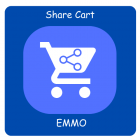Magento Open Source vs Adobe Commerce: Which One Fits Your Store?

Magento Open Source vs Adobe Commerce: Which One Fits Your Store?
Choosing the right eCommerce platform is crucial for your store's success. This comparison dives into the key differences between Magento Open Source and Adobe Commerce—covering cost, features, scalability, support, and more. Whether you're a small business looking for flexibility or an enterprise needing robust B2B tools and advanced analytics, this guide will help you decide which solution aligns best with your goals and budget.
Table Of Content
Magento Open Source vs Adobe Commerce: Which One Fits Your Store?
Choosing between Magento Open Source and Adobe Commerce depends on your business goals, technical capacity, and growth plans. Both use the same core codebase, but they offer very different experiences in pricing, features, scalability, and support.
Magento Open Source vs Adobe Commerce: Quick Overview
| Feature | Magento Open Source | Adobe Commerce |
|---|---|---|
| Pricing | Free | Starting ~$22,000/year (est.) |
| Hosting | Self-hosted | Adobe Commerce Cloud or self-hosted |
| Support | Community-driven | Official Adobe support |
| Customizability | High (open source) | High |
| Out-of-the-box Features | Basic eCommerce | Extensive modules and tools |
| Best For | Small to mid-sized businesses | Mid to enterprise-level businesses |
Core Differences Between Magento Open Source and Adobe Commerce
1. Pricing & Ownership
Magento Open Source is free and open-source. You host it yourself and own the entire codebase. It's ideal if you're technically inclined or working with a dev team.
Adobe Commerce is licensed software with a cost. You're paying for extra modules, official support, cloud hosting, and deeper integrations. It’s an investment, but with fewer infrastructure headaches.
2. Features
Both versions share the same base code. Adobe Commerce adds extra modules on top of Magento Open Source.
Key exclusive features in Adobe Commerce:
- Adobe Sensei-powered Live Search
- B2B suite (company accounts, shared catalogs, quote negotiation)
- Visual merchandising tools
- Customer segmentation and personalization
- Adobe Experience Manager integration
- Adobe App Builder access
- Seller-assisted shopping
- Advanced business intelligence tools
Magento Open Source covers basic features like product catalog, checkout, order management, and simple marketing tools. It lacks the deep analytics and enterprise features of Adobe Commerce.
3. Security & Maintenance
Magento Open Source requires manual patching, updates, and security monitoring. It doesn’t come with automatic security features out of the box.
Adobe Commerce includes automated security patches, dedicated support, and proactive monitoring — all backed by Adobe.
4. Hosting
Magento Open Source must be self-hosted. You can choose your own infrastructure provider. Performance depends on how you configure your environment.
Adobe Commerce is available with Adobe Commerce Cloud — a fully managed, scalable, and secure environment maintained by Adobe.
5. Support
Magento Open Source relies on community forums, documentation, and your development team.
Adobe Commerce includes dedicated technical support, priority patching, and faster issue resolution through Adobe’s enterprise services.
Shared Strengths
Despite the differences, both platforms offer:
- Customization flexibility
- Open architecture
- Support for headless commerce
- Scalability (with the right hosting)
- Magento Page Builder (now also in Open Source)
Common Misunderstanding: Is Magento Now Adobe Commerce?
No, Magento Open Source still exists. Adobe Commerce is built on top of it. Adobe’s branding may have confused users, but technically they’re siblings, not replacements. Magento Open Source remains actively maintained by Adobe.
We’ve seen confusion in the past — some assumed Magento was discontinued. That’s not true. Adobe continues to support both, with Open Source getting regular updates.
Which One Should You Use?
Choose Magento Open Source if:
- You have dev resources
- You want full control
- Your budget is limited
- You only need basic eCommerce features
Choose Adobe Commerce if:
- You need advanced B2B or personalization features
- You want scalable hosting with built-in support
- You rely heavily on data-driven marketing
- Your store handles high traffic and complex operations
Magento Open Source and Adobe Commerce serve different use cases. There's no one-size-fits-all answer. Instead, assess your current needs, growth plan, and technical capacity. A small store might thrive on Open Source, while an enterprise brand could benefit from the deeper capabilities of Adobe Commerce.
Tip
To enhance your eCommerce store’s performance with Magento, focus on optimizing site speed by utilizing Emmo themes and extensions. These tools are designed for efficiency, ensuring your website loads quickly and provides a smooth user experience. Start leveraging Emmo's powerful solutions today to boost customer satisfaction and drive sales!
FAQs
What is the main difference between Magento Open Source and Adobe Commerce?
Magento Open Source is free and community-supported, while Adobe Commerce is a paid, enterprise-level platform with advanced features, support, and cloud hosting options.
Is Magento Open Source still available in 2024?
Yes. Magento Open Source continues to be maintained by Adobe and is actively used by developers and businesses worldwide.
How much does Adobe Commerce cost?
Adobe Commerce pricing typically starts around $22,000 per year, depending on your business size and needs.
Who should use Magento Open Source?
Magento Open Source is ideal for small to mid-sized businesses that have development resources and prefer full control over hosting and customization.
What features are exclusive to Adobe Commerce?
Adobe Commerce includes advanced features like Live Search, B2B tools, customer segmentation, visual merchandising, and deep analytics powered by Adobe tools.
Can Magento Open Source be customized like Adobe Commerce?
Yes. Both platforms are highly customizable, but Adobe Commerce includes prebuilt modules that reduce development time for complex features.
Does Adobe Commerce include hosting?
Yes. Adobe Commerce Cloud offers a fully managed hosting solution with built-in security, performance optimization, and scalability.
What kind of support is available for Magento Open Source?
Magento Open Source relies on community forums, documentation, and your own development team for support and troubleshooting.
Is Adobe Commerce better for high-traffic stores?
Yes. Adobe Commerce is built for scalability and performance, making it better suited for enterprise-level stores handling high traffic and complex operations.
Does Magento Open Source include Page Builder?
Yes. As of recent updates, Magento Open Source now includes the Page Builder tool, previously exclusive to Adobe Commerce.
Are Magento Open Source and Adobe Commerce built on the same codebase?
Yes. Adobe Commerce is built on top of Magento Open Source and adds additional modules and enterprise-grade features.









